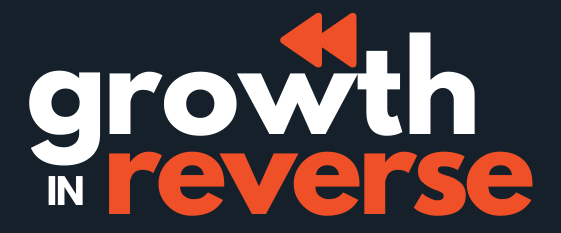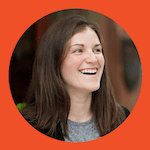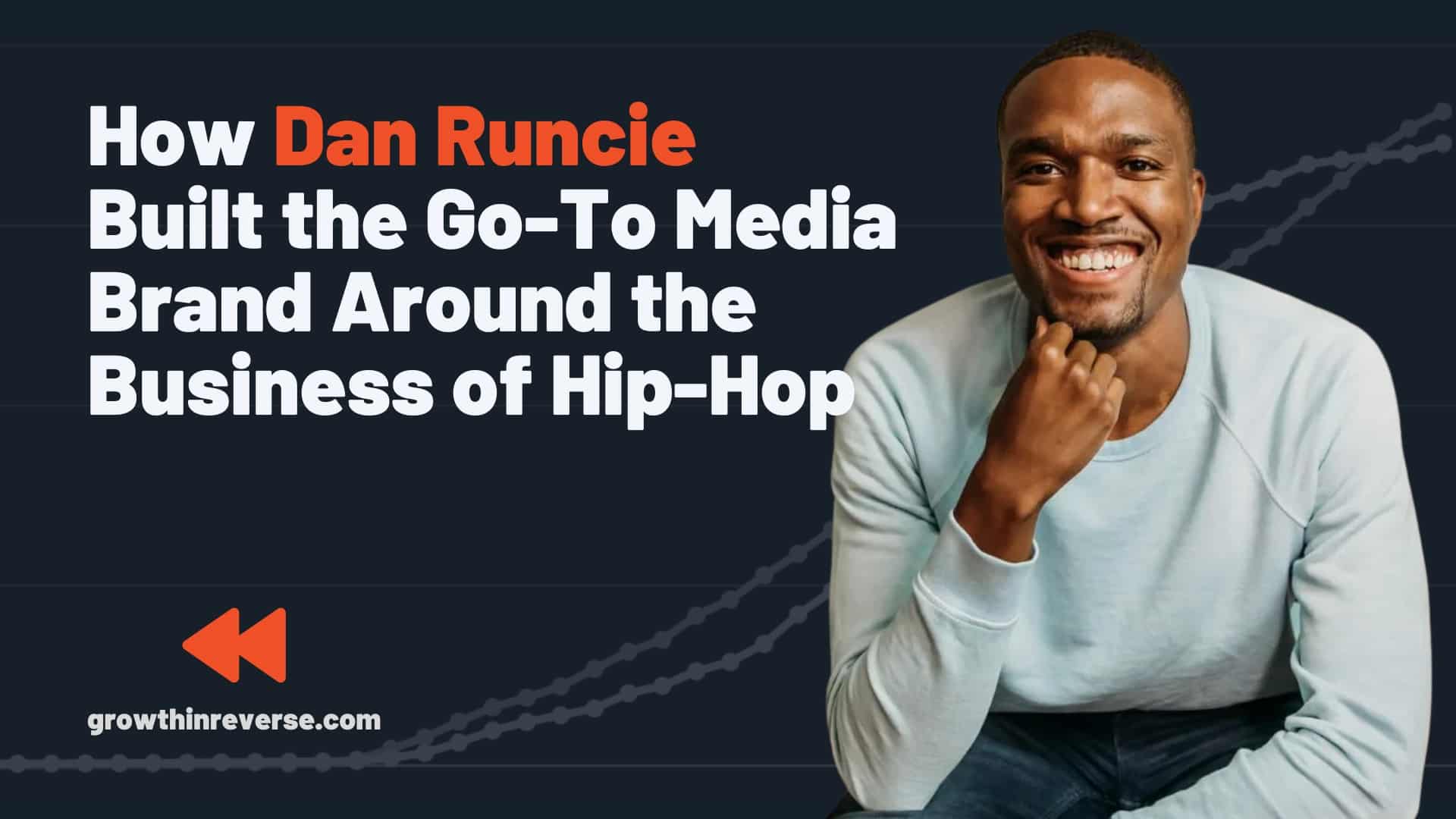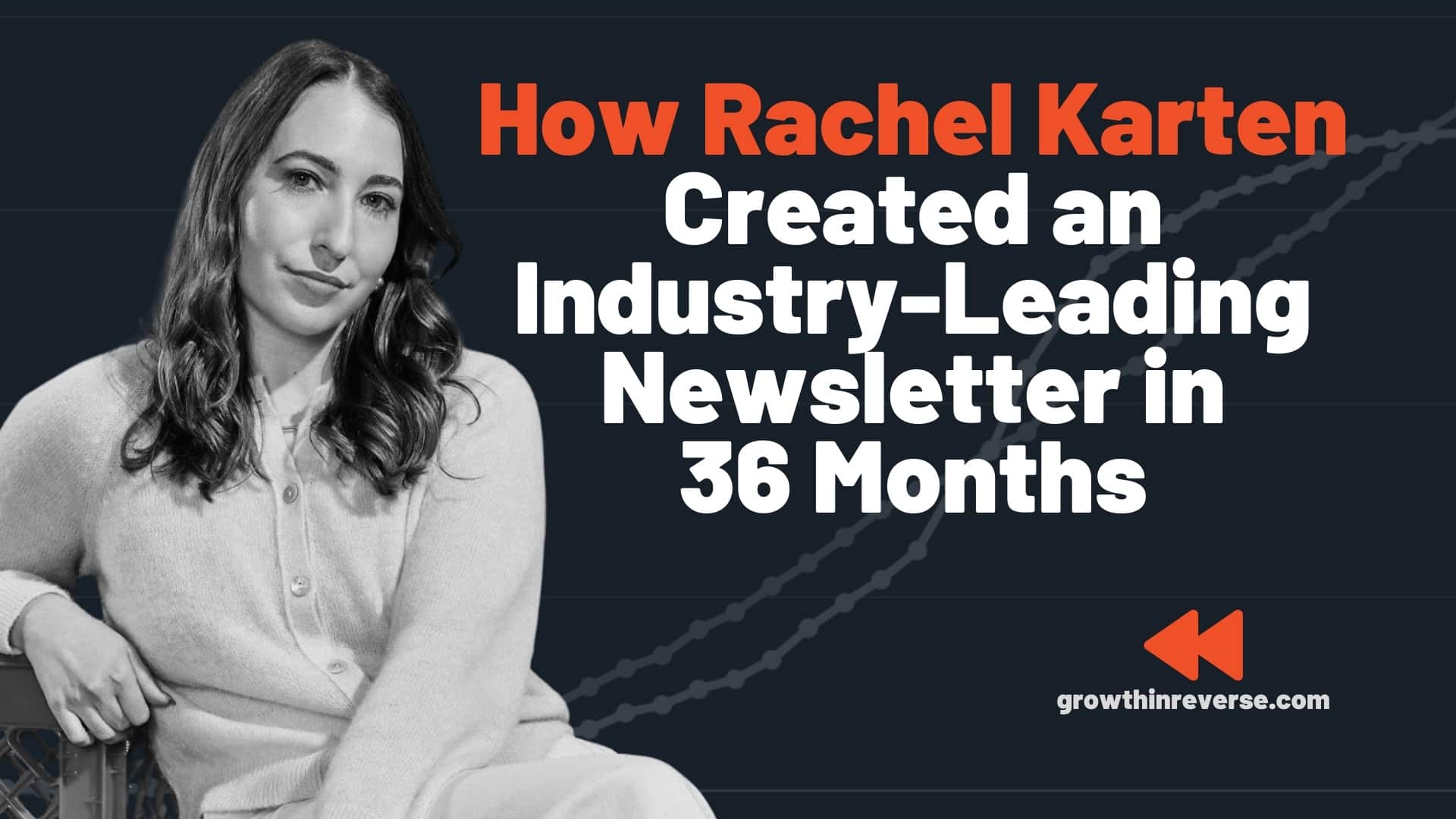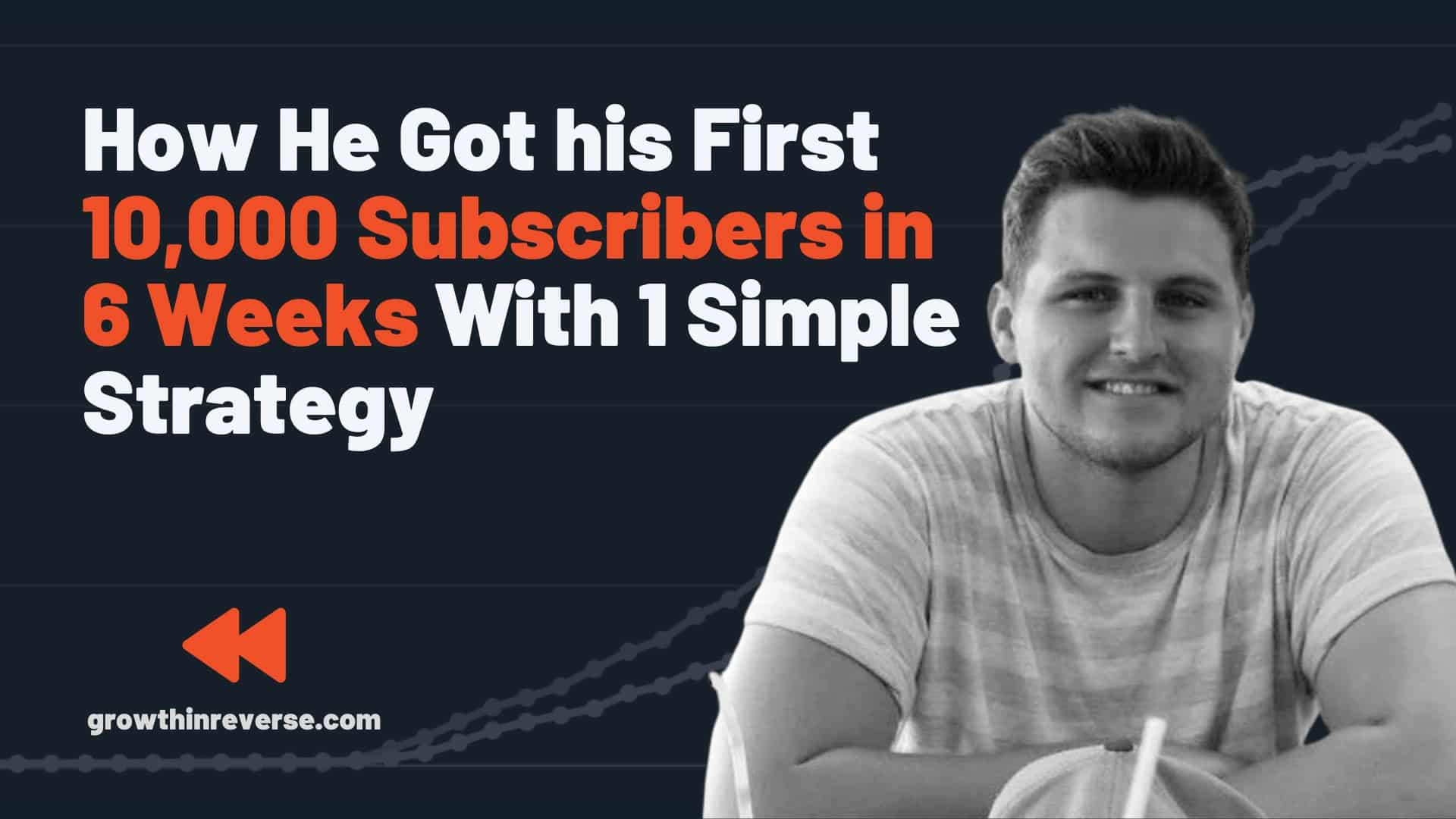Each week, I do a deep dive on a creator to find out how they’ve grown from 0 to 50k+ subscribers. I’ll share the numbers, the growth levers they’ve used, and how well each has done.
At the end, I include some takeaways you can use to implement these strategies to build your own newsletter or audience. Consider subscribing to get these each week.
How would you like to start a newsletter one day, and in 5 months wake up to 250k subscribers?
Sounds impossible right? Well, that’s exactly what Zain Kahn has done.
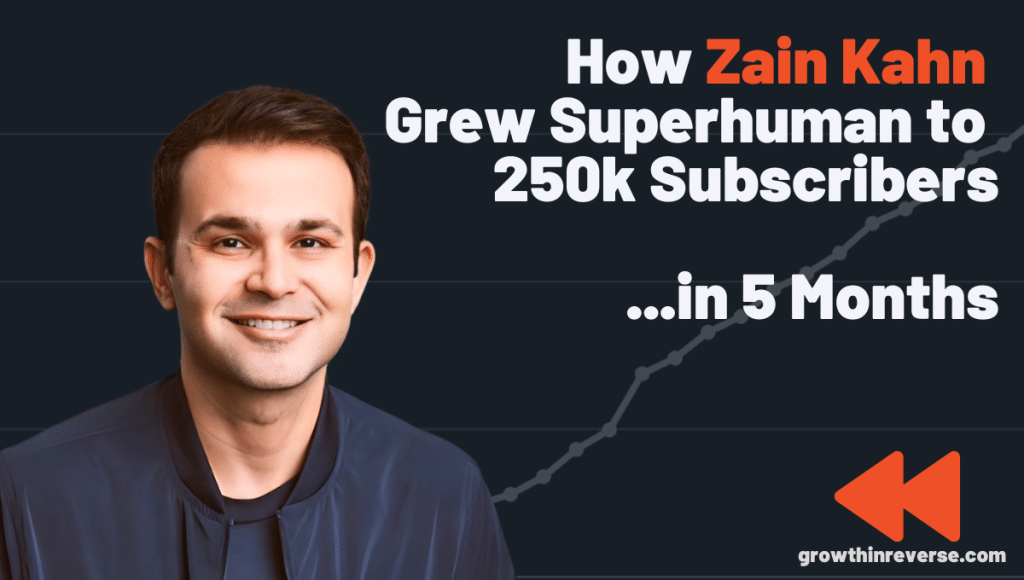
And he’s taken the AI and newsletter world by storm.
Now, of course, there’s a backstory to this. If you recall, there are very few (if any?) “overnight successes” in newsletters.
Zain’s been building his audience since June 2021, and now has almost a million followers across LinkedIn and Twitter.
So while he’s been able to get 250k subscribers since launching Superhuman, they didn’t just magically appear. But I’ll dig into how he built that audience to be able to grow a newsletter so quickly.
How Superhuman Makes Money
Because it’s so new, Zain only has one major revenue stream that I can see at this point:
Sponsorships
The Superhuman AI newsletter seems to make a majority of its revenue from sponsorships.
Here are the prices as of the date of publication:
- Main Ad (top of email)
- $1,749 per ad
- $5,949 for a 4-pack
- Featured Ad (middle of email)
- $449 per ad
- $1,519 for a 4-pack
Superhuman gets published 4 times per week, so let’s back into the numbers.
If every advertiser buys a 4-pack (conservative estimate) we’re looking at $29,782 per month or $358k per year.
I’d venture to guess he’s closer to around $400k per year if we estimate that half of the advertisers buy the 4 pack and the rest get bought up by individuals.
But let’s call it $358k per year at these current rates.
There might be affiliate deals going on here as well, but I wasn’t able to find a good example of one to share, so I am not including that here. It actually seemed like a huge missed opportunity.
The Growth Timeline of Zain Kahn
Since it seems like Zain and Superhuman came out of nowhere, let’s take a look at the growth timeline and work backwards.

The Growth of Superhuman
Zain has been at this for a while, and he started promoting Superhuman when he had around 650k followers across Twitter and LinkedIn.

I wanted to share with you a chart of the newsletter growth by itself because it’s quite been quite a rapid journey.
The Growth Levers of Zain Kahn
🧘 1. Methodical focus. Being able to grow this quickly wasn’t by accident. Zain was laser-focused on his growth in one area before moving on to the next.
🤝 2. Be part of a community. We’ve seen this before with creators, but the community Zain was in was next-level.
🧞♂️ 3. The engagement genie. This was my favorite part of Zain’s process. He comes out swinging with a really powerful, yet simple welcome email and continues to engage with his audience throughout.
🎁 4. Additional growth levers. A few bonus ones for you that have had a huge impact more recently. If I left these out, the deep dive would feel incomplete.
The Tool Stack
Here are some of the tools Zain uses to manage his newsletter:
- Beehiiv for the website/email service provider
- Passionfroot for sponsor management
- Typefully for social media scheduling
- Notion for note-taking and organization
Alright, let’s jump into these growth levers shall we?
1. Methodical Focus 🧘
The way Zain has been able to stay focused on one thing for 16 months, before taking those learnings and expanding into other territories is really impressive.
Zain started building his audience on Twitter in June 2021. Before that, his account was pretty empty.
A Deep Focus on Twitter
When he started publishing consistently on Twitter, Zain was writing about marketing and psychology. These were topics he enjoyed and had real-world experience with.
Here was his first thread:
This actually got decent engagement too, especially for having almost no following at the time.
He started posting 1-2 tweets a day, and one thread per week.
This reminds me of how Nathan Baugh grew his account as well: consistently publish threads until you get extremely good at them.
On top of that, Zain was engaging like a madman. If we learned anything from Dan Go last week, it’s that the more you engage, the more your following grows and your tweets get engaged back with.
Zain was working hard to grow his following on Twitter.
And he waited until he got to 100k followers there before he really started ramping up his LinkedIn presence.
Expanding Into New Territory
Once he mastered threads and short-form writing on Twitter, he started expanding his reach by posting the same content on LinkedIn.
Today, Similarweb reports that 63% of its overall traffic comes from social media. And 72% of that social traffic is coming from LinkedIn.
Wow.
Talk about an expansion of his audience.
And he’s just reposting almost the same exact content over to LinkedIn, but because he’s gotten really good at short-form content, his posts get really good engagement.
The learnings he got from creating short-form content for so long have served him extremely well on LinkedIn, so much so that he’s actually got a much larger following there than he does on Twitter.
And he’s now able to transmit that success into newsletter growth.
Zain said that all of his first 10k subscribers came from posting Twitter threads and repurposing them into LinkedIn carousels.

Essentially, doing the same things he’s been doing for 16 months but this time he added a call to action at the end of each thread.
It can be easy to look at Zain and think that he should have been doing both, but you don’t realize how well a deep focus on one thing can expedite your growth.
Now that he has both Twitter and LinkedIn dialed in, he’s starting to post over on Instagram as well.
I’m not kidding, he just started last week.

He Had Nothing to Sell
Zain grew his Twitter following without so much as a link in his bio for months.
There was no email to sign up for, no course to buy, nothing – all you could do was follow his account and like/comment on his tweets.
This is pretty rare for creators on any platform. Most people are there to use the channel as an engine for growing their main thing. But if someone wanted more from Zain, there was nothing for them to sign up for.
In August 2022, he promoted a company called Prequel, but it was short-lived.
It wasn’t until January 2023 when he launched Superhuman that they could really dig in and get more from Zain.
On top of having amazing content that people were eager to read, all of that built-up energy and goodwill that he had been building over the past two years exploded into this new project.
So, he spent a year and a half getting really good at writing threads and storytelling in short-form content, and now he’s able to leverage that expertise into rapidly growing an audience.
I’ve seen this a lot lately, and there’s almost a formula to it now:
- Spend 12+ months perfecting short-form content, honing your niche, and building an audience
- Repurpose that content to a similar platform (Twitter → LinkedIn)
- Expand into other channels
- Promote your newsletter on all of those channels
Congrats! You’re an “overnight” success with 100k subscribers.
Simple, not easy.
Can you do it faster? If you’re a dedicated student to the craft, probably. Many people don’t even have the patience to stick with it for that long, let alone double the work.
Zain’s threads are now driving a ton of his newsletter growth.
Just look at these metrics:
If he hadn’t spent the time learning how to write great short-form content, these threads would fall flat.
2. Be Part of a Community 🤝
I mentioned that Zain really got started on Twitter in June of 2021, and right around that time was when Sahil Bloom launched a course on Maven around audience building on Twitter.
Zain was part of that group, and there is even a testimonial of his on the sales page.

Being connected with Sahil Bloom back when he “only” had around 200k followers would be a boost for anyone. Considering he is now closing in on 1 million followers there.
But the value of the group he was part of was more than just being able to connect with Sahil.
Some of the other members of this course were:
- Nathan Baugh
- Blake Burge
- Amanda Natividad
- Dave Kline
- Brian Bourque
And you can see this playing out on Twitter with these folks all engaging with each other online. While it started on Twitter, they are also now helping each other on additional platforms.
Here’s an example of Nathan and Zain engaging with each other’s content back around that time.
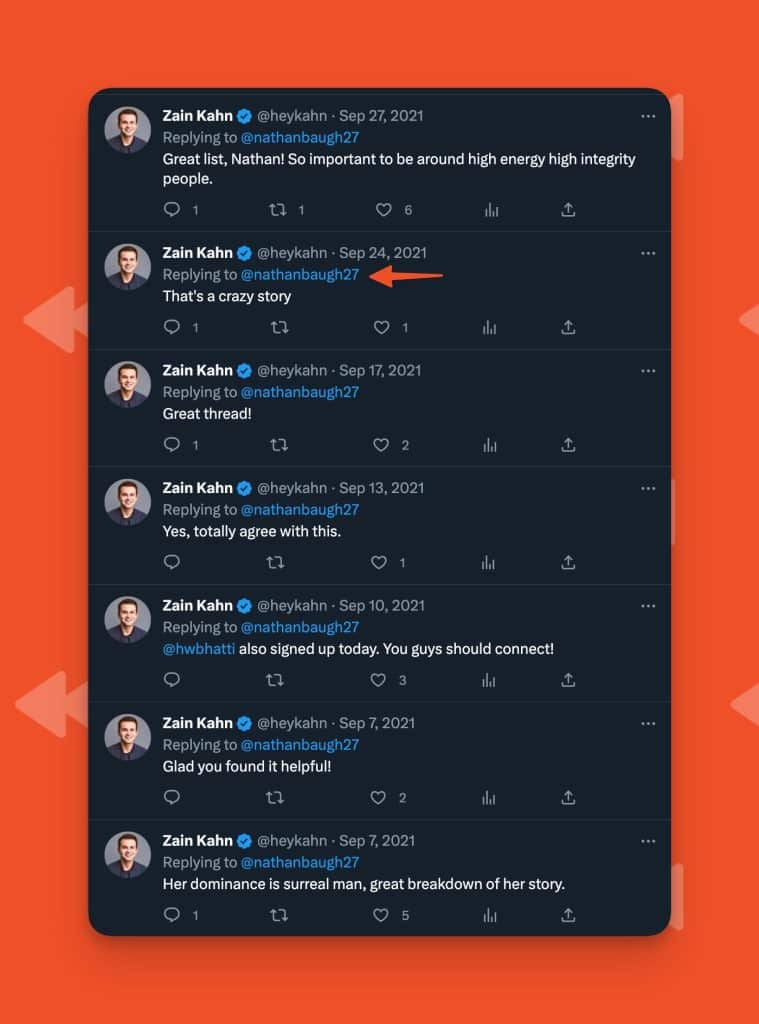
This group had a huge impact on Zain’s growth.
Being surrounded by other people who are also dedicated to growing their following can really give you a boost of confidence. Not to mention getting to share learnings with each other as you get better at the channel.
3. The Engagement Genie 🧞♂️
This next one is easy to overlook, but I would be willing to guess it’s had a big impact on his open rates.
So what’s this genie I’m talking about?
When someone signs up for an email, Zain sends a custom welcome email. Nothing crazy, until you look at it closer and break it apart.
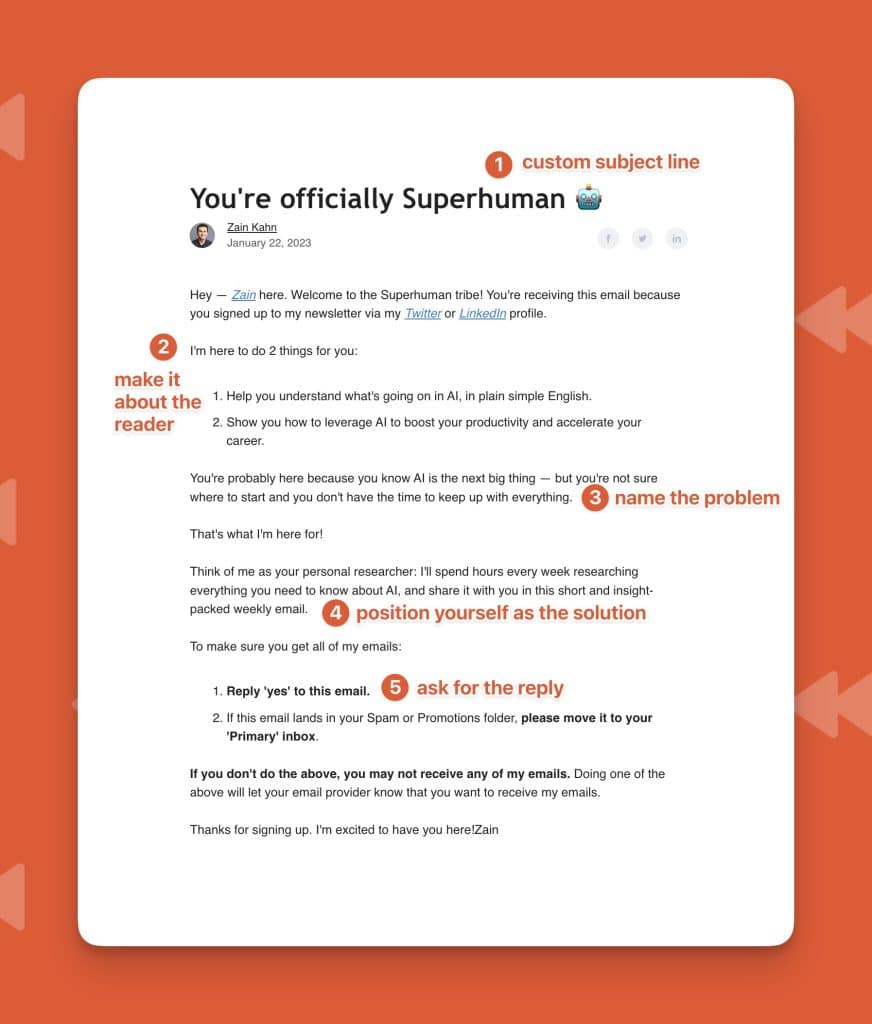
Let’s break this down line-by-line because the way Zain has set this up is really smart, and can easily go overlooked.
1. A custom subject line.
We’ve all seen them – the email that lands in your inbox with a subject line like:

You have no clue what the email is, or what this subscription you’re signing up for is – but it sounds like a big commitment.
Zain does not do this. Instead, he customizes the subject line to make it feel like you’re part of the community already.

👉 Yes, I know those subject lines are for the double opt-in, but you can at least change it up a little to say something like: “You’re almost Superhuman” or “Your invitation to become Superhuman is inside.”
Plus, the subject line is on brand and stands out in the inbox.
1b. Tell people why they are even getting this email from you
Zain starts the email by telling people why they’re getting the email (you signed up via Twitter or LinkedIn).

For one, he’s reminding people where they must have signed up from.
And second, calling out these two social profiles also has the benefit of driving followers on those platforms. I know this because it works well for me, so with his exponentially larger list, I’m sure it’s helping him as well.
Growing your channels doesn’t have to only work in one direction. You can also use tactics like this to encourage growth back to your social profiles as well.
Even if they found his newsletter via a Twitter thread, that doesn’t mean they followed him AND signed up for the newsletter.
2. Make it about the reader
He then goes on to tell people how he is going to help him. These two sentences are really smart.

The first is that he’s going to help you understand this really technical stuff in plain English.
The second sentence gives them the transformation they can expect: Accelerate your career and productivity with AI.
So you’re going to tell me how to accelerate my career, using automation and systems that you’re going to break down in simple language?
Sign me up for that!
3. Name the problem
Zain calls out the problem in simple terms: it’s confusing to know where to even start with AI, and you don’t have the time to keep up with all of the new tools and features.

Side note – I can almost guarantee that he’s heard these exact phrases from the replies he gets to his emails. More on that below.
4. Position yourself as the solution

By calling out the transformation people want, and the problem they have, he perfectly tees up this next part of positioning himself as the solution.
- You don’t have time? I’m going to spend the time.
- You want it in plain English? Done. And how about I give it to you in a short and insight-packed weekly email?
5. Ask for the reply
Now that he’s sold you again on why this is a newsletter you’re not going to want to miss, he asks for the reply.

He also specifically says: if you don’t do these things, you might not get these emails. I bet the reply rate from this email is off the charts.
Do you see how this whole thing works as a mini-sales page of sorts?
And he’s already sold them on the newsletter, they’ve already subscribed. But he’s building loyalty with these new subscribers and letting them know they’re in the right place.
I’m definitely rewriting my welcome email based on this.
6. Give away something of value
Lately, Zain started adding a mega-list of AI tools as a freebie at the end of the welcome email.

He’s probably using this list as a lead magnet for people to sign up, but do you see the way he positions it?
As a thank you for doing those two things above, here’s a free guide of AI tools to help you get started. He’s using the law of reciprocity to get people to feel like they owe him that reply.
Pretty cool stuff!
But wait, there’s more. Once you actually go to that list, if you happened to forget to reply or move the email to your primary inbox, he prompts you to do that again.

Just another touchpoint to remind people to take action. Will everyone do those things? Of course not, but he’s improving the percentage of people who do by following up there.
The Genie Lives On
Zain doesn’t stop there.
At the end of every email, Zain asks people what they thought about the content. He’s letting you know he’s serious about wanting these replies.

He’s been including this blurb at the end of his emails every week, reminding people that he promised to be their personal assistant (which he now cleverly associates with a magic genie) and he’s sticking to it.
He’s also using a bit of psychology here to say “82 others have replied” making you feel like you should too. Remember how he was focused on marketing and psychology in the beginning of his Twitter journey? Well, it’s paying off now.
There are 4 reasons I love this approach:
- He’s getting replies, which helps deliverability
- He’s getting real insights and feedback from readers (and I’m sure he uses their exact language in the welcome email as I mentioned above)
- There are probably some awesome testimonials lurking in the replies
- He’s building trust with his audience and they see he’s a real person
Getting subscribers to reply to your emails can be a really valuable way to improve their connection with you as a creator, while simultaneously improving your future open rates.
4. Additional Growth Levers
There are some additional growth levers that Zain has used to catapult his newsletter to 250k subscribers.
A. Paid Ads
Zain has also been using paid ads to supercharge his growth.
He started really heavily leaning into paid ads around the 100k subscriber mark.
I could have included an entire section on paid ads within this deep dive. But I felt like the more valuable story here is that he used his audience-building skills to grow this newsletter to a sizable scale without them.
B. A Trusty Sidekick
It’s also worth mentioning that Zain has some help from, Awais, who is also helping him out. I’m guessing they are brothers since they have the same last name, but cannot confirm that one.
Around 3 months ago, Awais started posting about AI-related content on his LinkedIn profile and has since rebranded his whole account to be around Superhuman.

Now they are both posting on LinkedIn about the newsletter and driving subscribers to Superhuman.
His LinkedIn experience section now lists him as “Head of Operations” for Superhuman.
C. Speed in Capitalizing on a New Market
It’s no surprise that there are a ton of AI newsletters cropping up.
Since the launch of Open AI’s Chat GPT in November, things are changing really quickly. It’s hard for any normal person to stay on top of the trends and what’s coming.
Zain has been able to capitalize on this by being one of the first AI newsletters AND doing it really well. He’s able to break down the concepts into layman’s terms, instead of some of the tech babble we get from other outlets.
AI newsletters starting today are going to struggle to grow this quickly purely because it’s been done before.
This is an important piece of his growth so I didn’t want to leave it out.
How You Can Replicate Some of Zain’s Success 🗺️
While the growth of Superhuman is untouchable for many of us, there are a few big takeaways from this story that I think we can learn from.
Pick One Channel
Zain went extremely hard on Twitter for over a year before moving to other platforms.
While I think it can be smart to have a tool automatically republish your content to LinkedIn, or Instagram, I think trying to grow your audience on both at the same time can slow you down.
If you’re going to grow an audience on Twitter, use a tool like Taplio to republish your threads to LinkedIn. Don’t spend time engaging or building a community over there – do that all on Twitter.
Yes, your LinkedIn growth will be a lot slower, but your Twitter growth will compound a lot faster if you’re spending your time learning the format over there.
Join a Community
While Zain had the fortune of being in Sahil Bloom’s audience-building course, you can still get value out of courses and communities like this.
Not only do you get to surround yourself with other people who are building their audience, but you can network and interact with the instructor, which is valuable as well.
One of the best things I’ve done was join communities of people who are building towards a specific goal.
Rework Your Welcome Email
This is something I’m doing as well. While I got great feedback from it in the past, I am realizing there is a lot of room for improvement here.
Tips for improving your welcome email:
- Use a custom subject line
- Remind people why they are getting the email and where they signed up
- Tell them how you are going to help solve their problem
- Make it about the reader, don’t gab about your accomplishments
- Ask them to reply
- Give away something of value
The beauty of this is that it’s one of those things you create once and it continues to help you each time someone signs up for your list.
Here is my old welcome email:

Here is the new version.
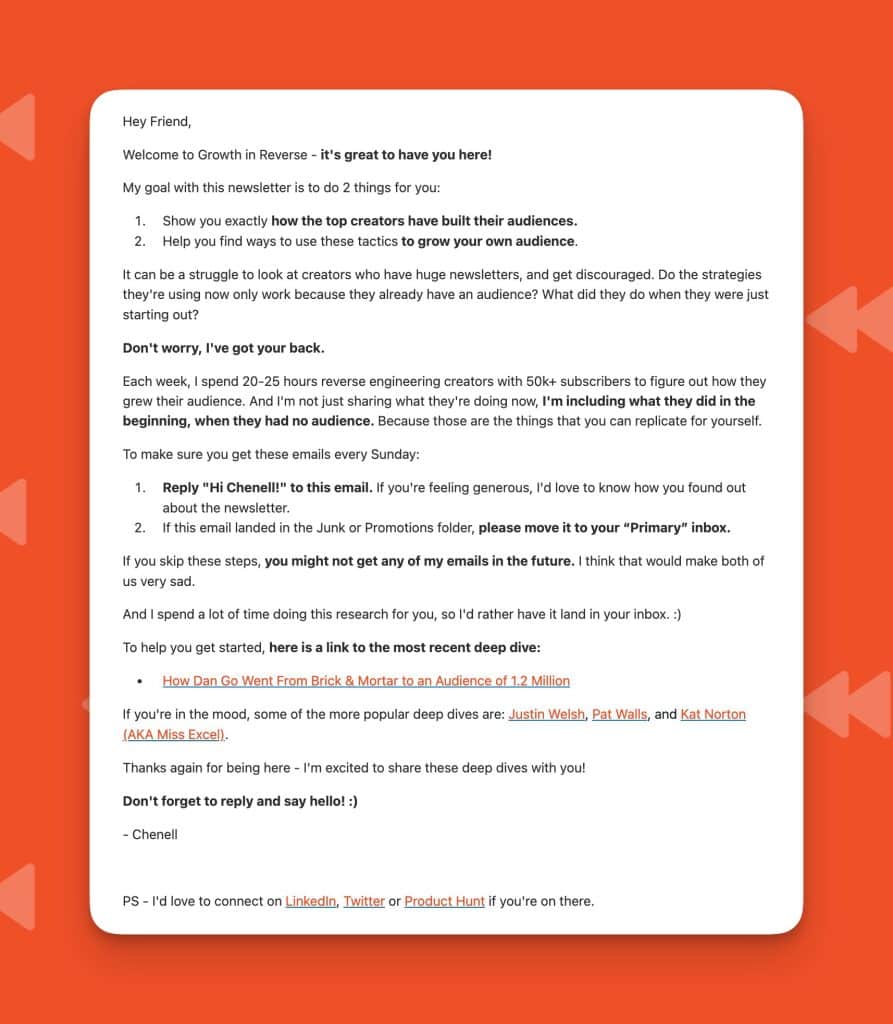
It’s definitely longer, and I’ll probably work to cut this down quite a bit, but I wanted to get something out into the world and see how it does.
I’d love to see how you update your welcome email or get any feedback from you. You can always tweet at me on Twitter.
